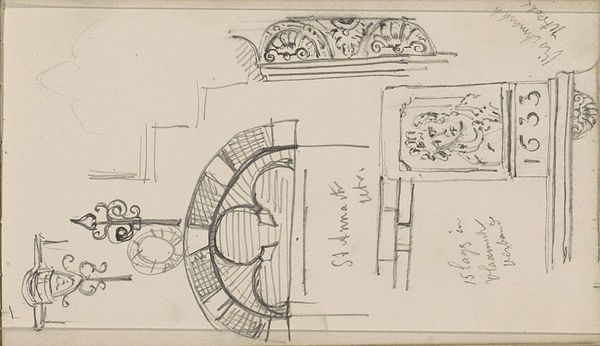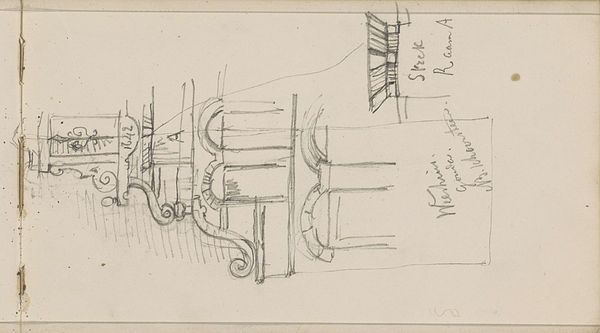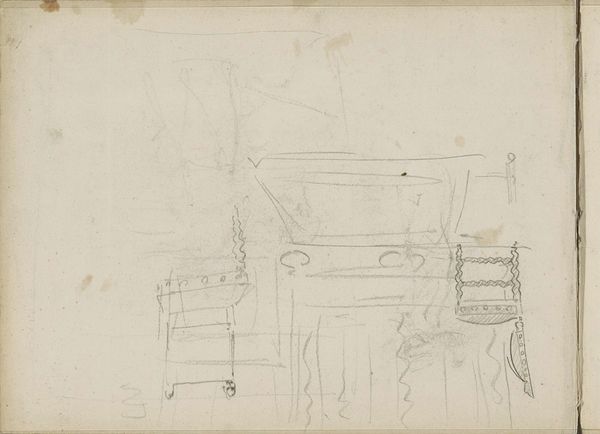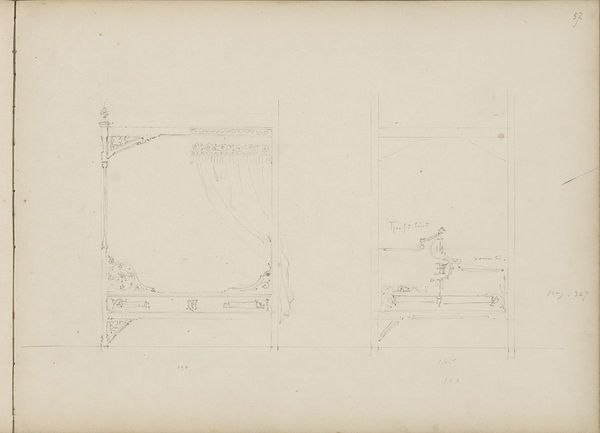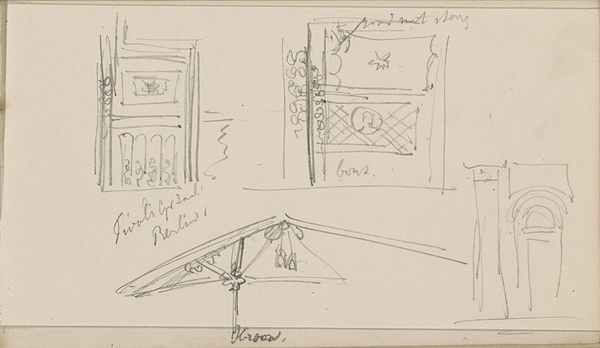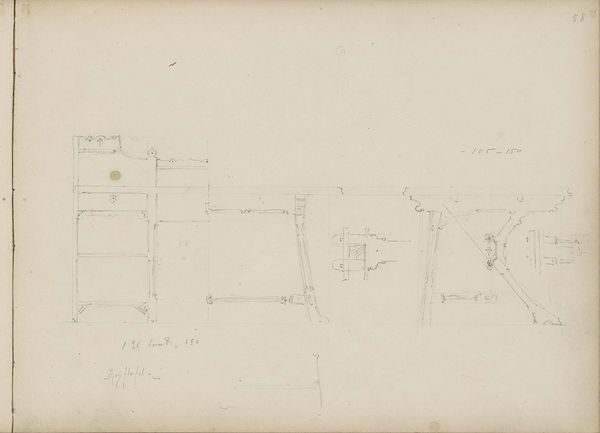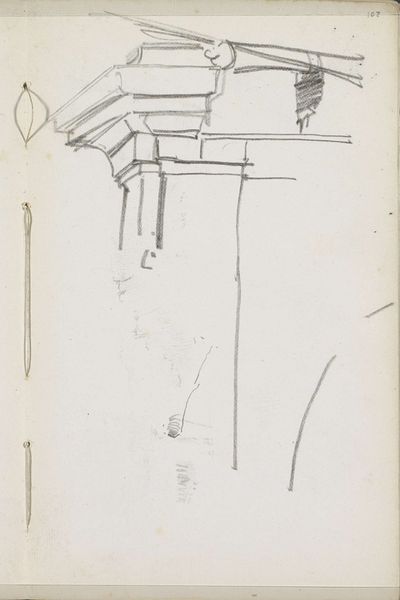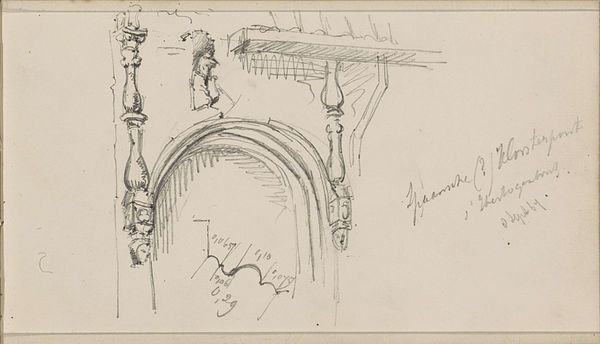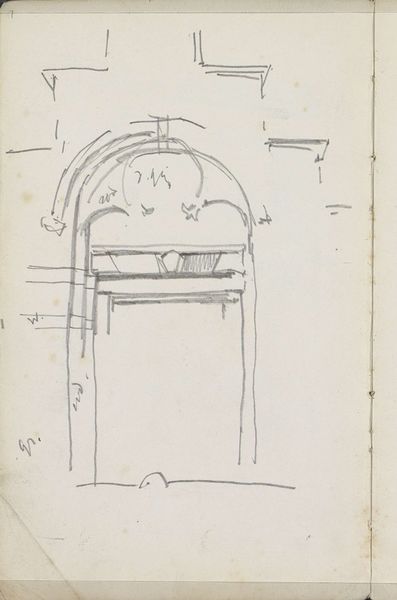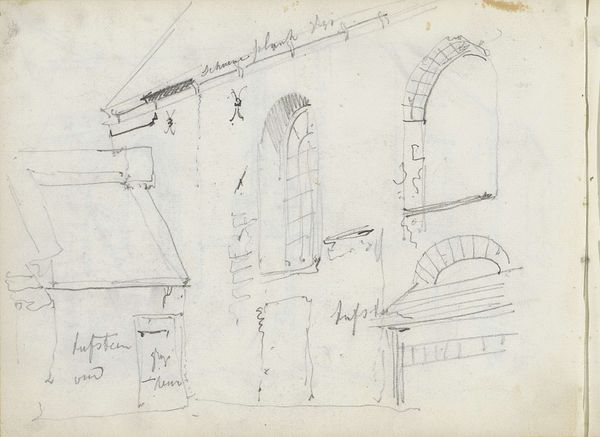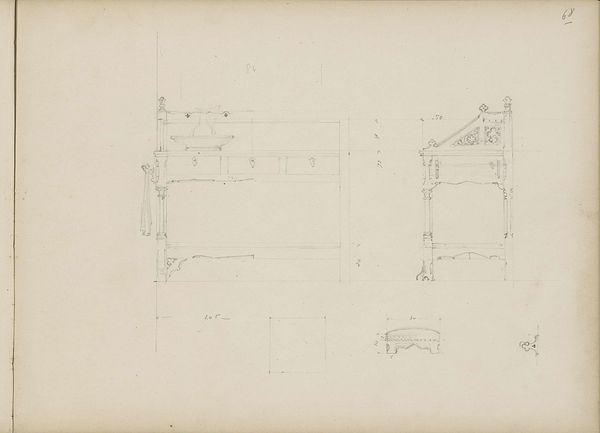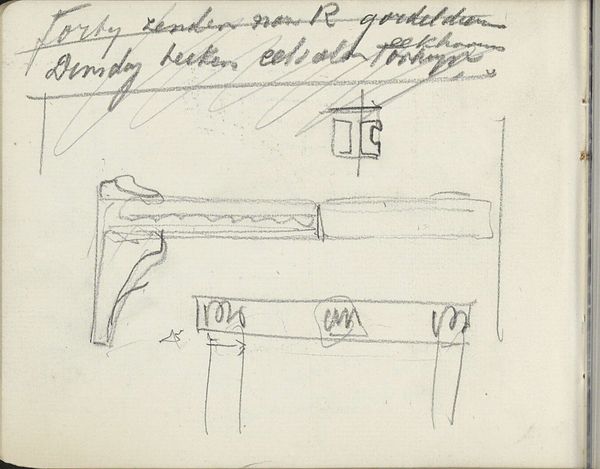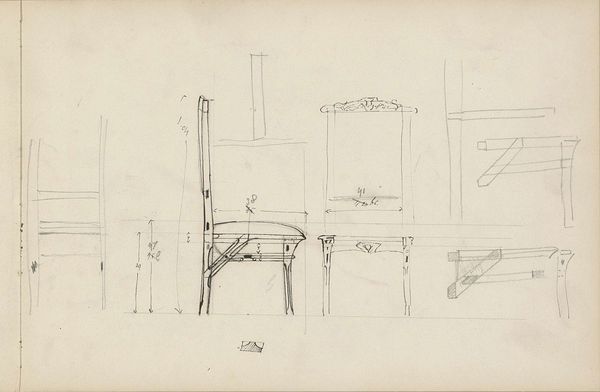
drawing, paper, ink
#
drawing
#
pen sketch
#
paper
#
ink
#
ink drawing experimentation
#
geometric
#
sketch
#
sketchbook drawing
#
modernism
Copyright: Rijks Museum: Open Domain
Curator: Here we have Carel Adolph Lion Cachet’s “Ontwerpen voor een bank,” or “Designs for a Bank,” dating from around the 1930s, currently held at the Rijksmuseum. Editor: My first impression is of something both incredibly precise and surprisingly playful. It's an ink sketch, but the shapes are quite solid, almost architectural. And the various price estimations scribbled all over give it a very interesting quality. Curator: Absolutely. Cachet was deeply engaged with the aesthetics of his time, reflecting modernist trends towards functional design. But this sketch provides so much additional context about mid-century Dutch commercial art. What purpose would this design have served, if manufactured? Editor: Well, looking at the detail, I'm immediately drawn to the materiality – the imagined wood grain, the textile finish suggested by the curved forms. I see not just a piece of furniture, but the skilled labor and resources required to bring it into being. Note all of those detailed costing breakdowns, suggesting what it takes to construct this design with precious materials in the years before and during the Second World War. It’s quite striking when you consider what these materials might have been needed for by the end of that decade. Curator: Yes, and those financial notes invite a deeper consideration of art's relationship to economic structures. How was Cachet positioning himself in the commercial sphere of interwar Holland? Was he simply contracted for this work, or hoping to use it to showcase other commercial works, thereby solidifying his reputation within that sphere? Editor: And even without the actual object, the drawing communicates the intent behind the creation. We get the process, the materiality, and ultimately, a glimpse into the life of design in 1930s Netherlands. Curator: Exactly. This sketch becomes a powerful window into the social and economic conditions shaping artistic production. Editor: I come away with a richer appreciation for the physical making and production considerations involved. Curator: And I with a deepened sense of art's place within a network of patronage, market forces, and the politics of everyday life.
Comments
No comments
Be the first to comment and join the conversation on the ultimate creative platform.
